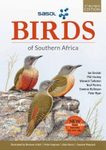Rufen Sie uns an (9:30 - 18:00 DE)
+44 (0) 1803 86 59 13International
+44 (0) 1803 86 59 13Brauchen Sie Hilfe?
HilfeDatenerfassung und Monitoring
Feldführer und Naturgeschichte
Akademische und professionelle Bücher
- Evolutionary Biology
- Evolution
- Human Evolution & Anthropology
- Cladistics, Phylogeny & Taxonomy
- View All
British Wildlife
British Wildlife is the leading natural history magazine in the UK, providing essential reading for both enthusiast and professional naturalists and wildlife conservationists. Published eight times a year, British Wildlife bridges the gap between popular writing and scientific literature through a combination of long-form articles, regular columns and reports, book reviews and letters.
Conservation Land Management
Conservation Land Management (CLM) ist ein Mitgliedermagazin und erscheint viermal im Jahr. Das Magazin gilt allgemein als unverzichtbare Lektüre für alle Personen, die sich aktiv für das Landmanagement in Großbritannien einsetzen. CLM enthält Artikel in Langform, Veranstaltungslisten, Buchempfehlungen, neue Produktinformationen und Berichte über Konferenzen und Vorträge.





![Oiseaux de l'Afrique de l'Ouest [Birds of Western Africa] Oiseaux de l'Afrique de l'Ouest [Birds of Western Africa]](http://mediacdn.nhbs.com/jackets/jackets_resizer_xlarge/26/262067.jpg?height=620)
![Oiseaux de l'Afrique de l'Ouest [Birds of Western Africa]](http://mediacdn.nhbs.com/jackets/jackets_resizer/20/203054.jpg)
![Oiseaux de l'Afrique de l'Ouest [Birds of Western Africa]](http://mediacdn.nhbs.com/jackets/jackets_resizer/20/203054_1.jpg)
![Oiseaux de l'Afrique de l'Ouest [Birds of Western Africa]](http://mediacdn.nhbs.com/jackets/jackets_resizer/20/203054_2.jpg)
![Oiseaux de l'Afrique de l'Ouest [Birds of Western Africa]](http://mediacdn.nhbs.com/jackets/jackets_resizer/20/203054_3.jpg)
![Oiseaux de l'Afrique de l'Ouest [Birds of Western Africa]](http://mediacdn.nhbs.com/jackets/jackets_resizer/20/203054_4.jpg)
![Oiseaux de l'Afrique de l'Ouest [Birds of Western Africa]](http://mediacdn.nhbs.com/jackets/jackets_resizer/22/227110.jpg)
![Oiseaux de l'Afrique de l'Ouest [Birds of Western Africa]](http://mediacdn.nhbs.com/jackets/jackets_resizer/22/227110_1.jpg)
![Oiseaux de l'Afrique de l'Ouest [Birds of Western Africa]](http://mediacdn.nhbs.com/jackets/jackets_resizer/22/227110_2.jpg)
![Oiseaux de l'Afrique de l'Ouest [Birds of Western Africa]](http://mediacdn.nhbs.com/jackets/jackets_resizer/22/227110_3.jpg)
![Oiseaux de l'Afrique de l'Ouest [Birds of Western Africa]](http://mediacdn.nhbs.com/jackets/jackets_resizer/22/227110_4.jpg)
![Oiseaux de l'Afrique de l'Ouest [Birds of Western Africa]](http://mediacdn.nhbs.com/jackets/jackets_resizer/22/227110_5.jpg)
![Oiseaux de l'Afrique de l'Ouest [Birds of Western Africa]](http://mediacdn.nhbs.com/jackets/jackets_resizer/22/227110_6.jpg)
![Oiseaux de l'Afrique de l'Ouest [Birds of Western Africa]](http://mediacdn.nhbs.com/jackets/jackets_resizer/26/262067.jpg)





![Insectes de France et d'Europe [Insects of France and Europe]](http://mediacdn.nhbs.com/jackets/jackets_resizer_medium/21/212850.jpg?height=150&width=101)
![Guide Delachaux des Papillons de France [Guide to the Butteflies of France]](http://mediacdn.nhbs.com/jackets/jackets_resizer_medium/22/224647.jpg?height=150&width=103)
![Guide des Chenilles d'Europe: Les Chenilles de Plus de 500 Espèces de Papillons sur 165 Plantes Hôtes [Collins Field Guide to Caterpillars of Britain and Europe]](http://mediacdn.nhbs.com/jackets/jackets_resizer_medium/22/226493.jpg?height=150&width=100)
![Oiseaux de l'Afrique de l'Ouest [Birds of Western Africa]](http://mediacdn.nhbs.com/jackets/jackets_resizer_medium/22/227110.jpg?height=150&width=98)
![Guide des Coléoptères d'Europe [Guide to the Beetles of Europe]](http://mediacdn.nhbs.com/jackets/jackets_resizer_medium/23/238721.jpg?height=150&width=106)
![Orchidées d'Europe d'Afrique du Nord et du Proche-Orient [Orchids of Europe, North Africa and the Middle East]](http://mediacdn.nhbs.com/jackets/jackets_resizer_medium/22/228653.jpg?height=150&width=110)
![Mammifères d'Afrique [The Kingdon Pocket Guide to African Mammals]](http://mediacdn.nhbs.com/jackets/jackets_resizer_medium/23/238784.jpg?height=150&width=99)
![Fourmis d'Europe Occidentale [Ants of Britain and Europe]](http://mediacdn.nhbs.com/jackets/jackets_resizer_medium/23/230085.jpg?height=150&width=106)
![Guide des Sauterelles, Grillons et Criquets d'Europe Occidentale [Guide to the Grasshoppers, Crickets and Locusts of Western Europe]](http://mediacdn.nhbs.com/jackets/jackets_resizer_medium/23/238314.jpg?height=150&width=110)
![Reconnaître Facilement Les Plumes [Easily Recognizing Feathers]](http://mediacdn.nhbs.com/jackets/jackets_resizer_medium/21/212848.jpg?height=150&width=112)
![Araignées de France et d'Europe [Spiders of France and Europe]](http://mediacdn.nhbs.com/jackets/jackets_resizer_medium/21/213692.jpg?height=150&width=99)
![Guide de la Flore des Alpes: 1400 Espèces des Étages Montagnard, Alpin et Subalpin [Guide to the Flora of the Alps: 1400 Species of the Montagnard, Alpine and Subalpine Areas]](http://mediacdn.nhbs.com/jackets/jackets_resizer_medium/24/247050.jpg?height=150&width=102)












![Corbeaux et Corneilles [Ravens and Crows]](http://mediacdn.nhbs.com/jackets/jackets_resizer_medium/22/228299.jpg?height=150&width=115)
![La Vie Sous-Marine de Méditerranée [Marine Life of the Mediterranean]](http://mediacdn.nhbs.com/jackets/jackets_resizer_medium/24/244304.jpg?height=150&width=103)
![Identifier les Plumes des Oiseaux d'Europe Occidentale [Feathers: An Identification Guide to the Feathers of Western European Birds]](http://mediacdn.nhbs.com/jackets/jackets_resizer_medium/23/237976.jpg?height=150&width=103)
![Guide Delachaux des Arbres d'Europe [Collins Tree Guide]](http://mediacdn.nhbs.com/jackets/jackets_resizer_medium/25/255565.jpg?height=150&width=103)
![Oiseaux des Alpes: Où, Quand et Comment les Observer [Birds of the Alps: Where, When and How to Observe Them]](http://mediacdn.nhbs.com/jackets/jackets_resizer_medium/25/254178.jpg?height=150&width=96)
![Guide Peterson des Oiseaux de France et d'Europe [Peterson Field Guide to the Birds of Britain and Europe]](http://mediacdn.nhbs.com/jackets/jackets_resizer_medium/20/203644.jpg?height=150&width=94)
![Le Guide Ornitho: Le Guide le Plus Complet des Oiseaux d'Europe, d'Afrique du Nord et du Moyen-Orient [Collins Bird Guide: The Most Complete Guide to the Birds of Europe, North Africa and the Middle East]](http://mediacdn.nhbs.com/jackets/jackets_resizer_medium/22/223158.jpg?height=150&width=104)
![Comprendre la Mue des Oiseaux: Une Aide pour l'Ornitho de Terrain [Understanding Bird Moult: A Guide for the Field Ornithologist]](http://mediacdn.nhbs.com/jackets/jackets_resizer_medium/24/247912.jpg?height=150&width=128)
![Hémiptères de France, de Belgique, du Luxembourg et de Suisse [Hemiptera of France, Belgium, Luxembourg and Switzerland]](http://mediacdn.nhbs.com/jackets/jackets_resizer_medium/22/226274.jpg?height=150&width=106)
![Abeilles, Bourdons, Guêpes et Fourmis d'Europe: Identification, Comportement, Habitat [Bees, Bumblebees, Wasps and Ants of Europe: Identification, Behaviour, Habitat]](http://mediacdn.nhbs.com/jackets/jackets_resizer_medium/24/247692.jpg?height=150&width=97)